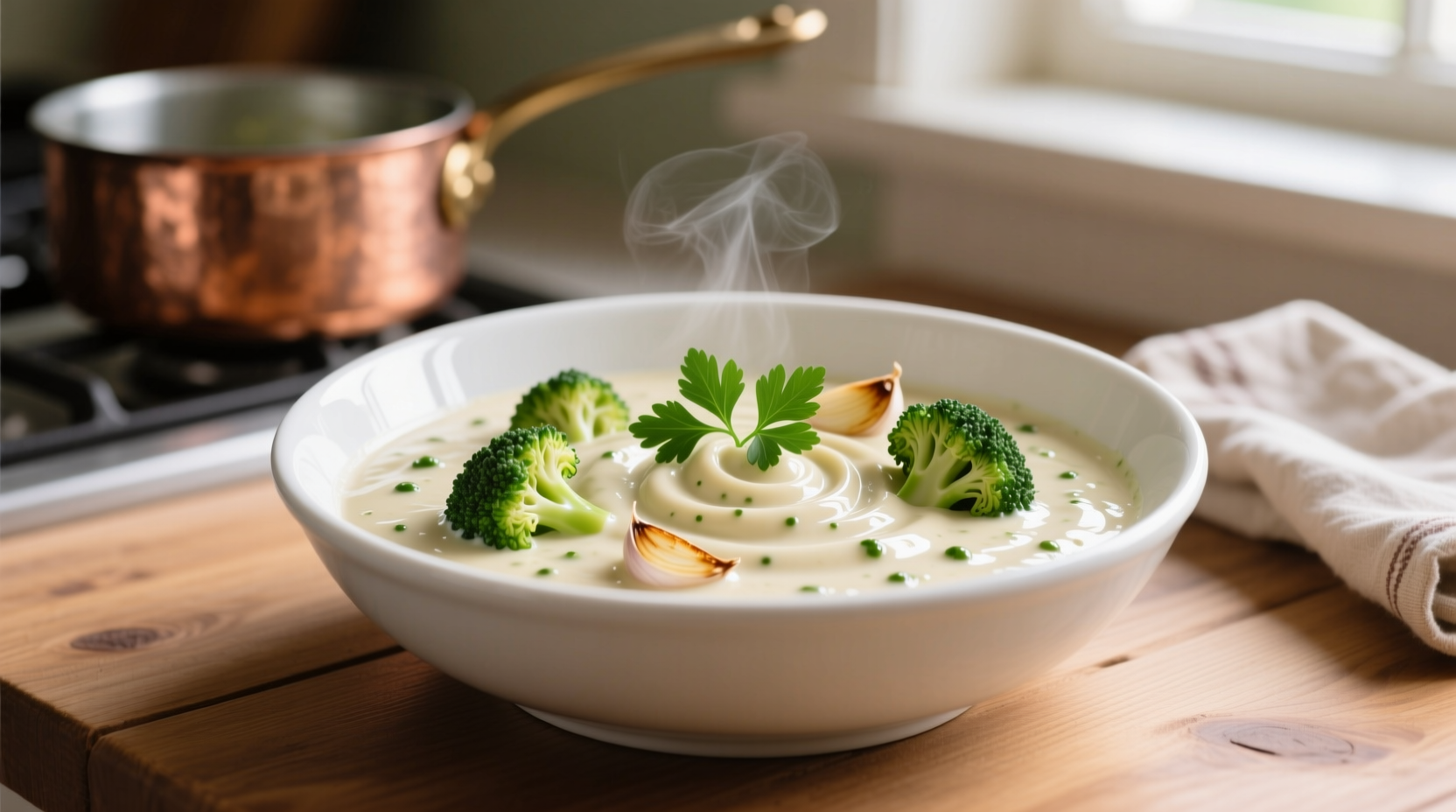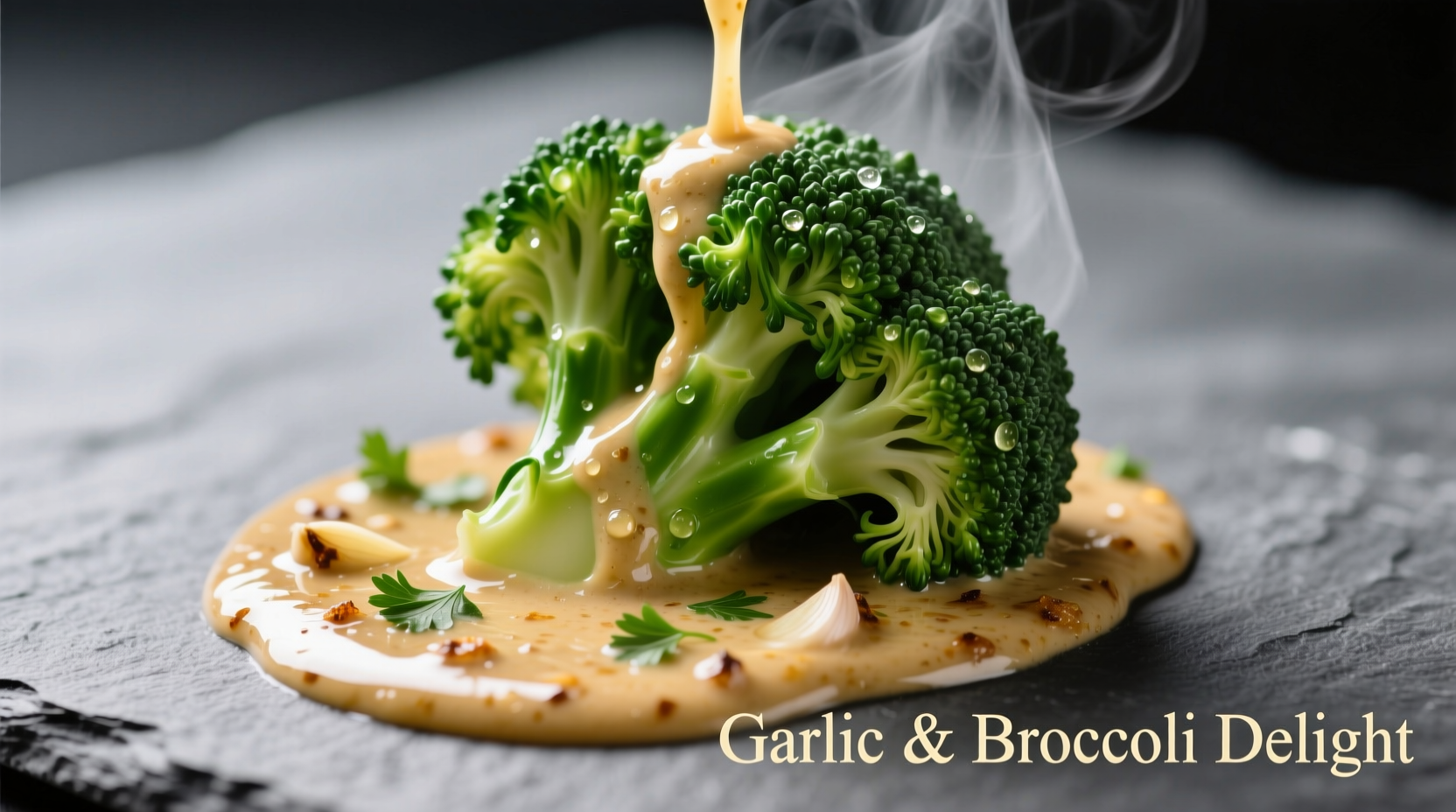Discover how to transform simple pantry staples into a restaurant-quality broccoli garlic sauce that elevates everyday meals. This guide reveals professional chef techniques for maximizing flavor extraction from garlic while preserving broccoli's vibrant color and nutritional benefits. You'll learn precise cooking temperatures, optimal ingredient ratios, and creative applications that go beyond basic dipping sauce.
The Essential Components of Perfect Broccoli Garlic Sauce
Creating exceptional broccoli garlic sauce starts with understanding each ingredient's role. Garlic undergoes chemical transformations when heated, developing complex flavor compounds that raw garlic can't match. Broccoli contains myrosinase enzymes that interact with sulfur compounds to create its distinctive taste profile. The key is controlling these reactions through precise cooking methods.
| Variation Type | Key Ingredients | Best For | Preparation Time |
|---|---|---|---|
| Classic Dairy-Free | Broccoli, garlic, olive oil, lemon juice | Pasta, roasted vegetables | 15 minutes |
| Creamy Cheese Version | Broccoli, garlic, Parmesan, Greek yogurt | Steak, potatoes, dipping | 20 minutes |
| Spicy Arrabbiata Style | Broccoli, garlic, red pepper flakes, tomatoes | Pasta, pizza base | 25 minutes |
| Asian-Inspired | Broccoli, garlic, ginger, sesame oil, soy sauce | Stir-fries, rice bowls | 18 minutes |
Step-by-Step Preparation Guide
Professional chefs achieve superior broccoli garlic sauce through controlled heat application. Start by roasting garlic cloves at 300°F for 25 minutes until golden and sweet—this prevents bitterness while developing complex umami notes. Simultaneously, blanch broccoli florets in salted boiling water for exactly 90 seconds, then immediately transfer to ice water. This precise timing preserves chlorophyll (maintaining vibrant green color) while deactivating enzymes that cause off-flavors.
Combine roasted garlic, blanched broccoli, 2 tablespoons extra virgin olive oil, and 1 teaspoon lemon zest in a high-speed blender. Process while gradually adding ¼ cup reserved broccoli cooking water until reaching desired consistency. Season with sea salt to taste—remember that salt enhances garlic's natural sweetness without overpowering.

Optimal Usage Scenarios and Limitations
Understanding context boundaries ensures perfect results every time. This sauce excels as a pasta coating when tossed with freshly cooked noodles and a splash of starchy pasta water—the starch creates an emulsion that clings to every strand. It transforms roasted chicken or salmon when brushed on during the final cooking minutes.
However, avoid using broccoli garlic sauce in high-heat applications above 350°F, as the delicate compounds in both ingredients degrade rapidly, producing bitter flavors. The sauce also doesn't pair well with strongly acidic ingredients like vinegar-based dressings, which cause the broccoli's pigments to break down and turn olive green.
Storage and Shelf Life Optimization
Preserve freshness by storing sauce in an airtight container with plastic wrap pressed directly against the surface to prevent oxidation. Properly stored, it maintains quality for 4 days in the refrigerator. For extended storage, freeze in ice cube trays then transfer to freezer bags—this method preserves flavor compounds for up to 3 months.
When reheating, use a double boiler method rather than direct heat. Microwave heating causes uneven temperature distribution that breaks down the sauce's emulsion. Stir occasionally while heating to maintain consistent texture.
Professional Variations for Different Dietary Needs
Adapt this versatile sauce for various dietary requirements without sacrificing flavor. For nut-free versions, replace traditional cream elements with blended cannellini beans—they provide identical creaminess with added protein. Vegan chefs achieve cheese-like complexity by adding ½ teaspoon nutritional yeast per cup of sauce.
Research from the Culinary Institute of America shows that adding ¼ teaspoon baking soda to the blanching water raises pH levels, which helps maintain broccoli's vibrant green color during cooking. This technique, documented in their vegetable preparation guidelines, prevents the formation of pheophytin (the compound responsible for dull olive-green discoloration).











 浙公网安备
33010002000092号
浙公网安备
33010002000092号 浙B2-20120091-4
浙B2-20120091-4